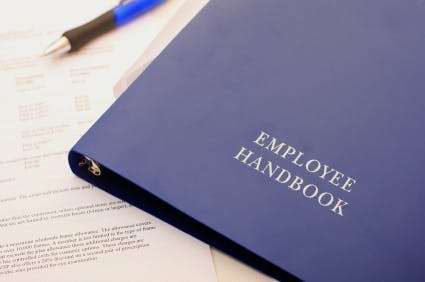By Eric B. Meyer
Right around the time that email subscribers to this blog receive today’s post, I’ll be sitting on an “Ask the Expert” legal panel at the Lehigh Valley Chapter of SHRM saying lawyerly stuff like:
“It depends,” and “I’ll get back to you on that,” and “Are you serious, or just asking for a friend?“
4 things you really need to have
One of the questions I know that we’ll get is about employee handbook acknowledgments. Specifically, what should they look like?
- They should include an at-will disclaimer, reminding employees that nothing in the handbook creates a contract of employment for any set period of time.
- They should have a caveat that the employer may change the handbook from time to time. (Of course, when you do, make sure to issue those updates to your employees).
- They should delineate who at the company has the gravitas to enter into an agreement which may conflict with the handbook. Otherwise, the handbook trumps any oral statement to the contrary from any manager or supervisor.
- They should end with a statement that the employee has received, read, and understood the employee handbook.
And, one more important point
Closely related to No. 4; so let’s call it 4(a): Make sure that you publish the employee handbook (and acknowledgment) in whatever primary language(s) your workforce reads, writes, and understands. (That would include braille for any blind employees).
So many laws (e.g., anti-discrimination laws, FMLA) hinge upon providing notice to employees about their rights. It’s a not big hurdle for employees who have trouble reading English to argue that they didn’t understand their rights at work, notwithstanding a signed acknowledgment to the contrary.
This was originally published on Eric B. Meyer’s blog, The Employer Handbook.
